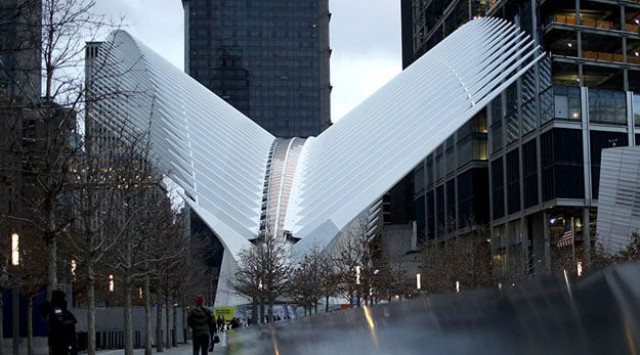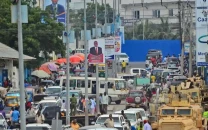World's costliest train station to open at site of NY's 9/11 tragedy
In the 12 years since the project was unveiled, it has been heavily criticized

The Oculus structure of the World Trade Center Transportation Hub is pictured as people visit the World Trade Center site, formerly known as "Ground Zero" in New York, February 26, 2016. PHOTO: REUTERS
Twelve years in the making, there will be no official ceremony to mark the 3 pm opening to rail commuters of the World Trade Center Transportation Hub next to the site of the Twin Towers, which were destroyed in the al Qaeda hijackings.
Ambitious blueprint unveiled for final World Trade Centre tower
The center connects the PATH commuter rail to New Jersey with New York subway lines, provides indoor pedestrian access to the Trade Center towers and will also house an enormous shopping and restaurant plaza.
The building, designed by Spanish-Swiss architect Santiago Calatrava and called Oculus, is a giant oval made up of steel ribs and glass laid out in elliptical shape, reaching for the sky like wings of a bird.
The space measures 350 feet (107 meters) long by 115 feet (35 meters) at its widest point, according to Calatrava's website.
Thursday is only a partial opening and the shops are slated to open in August. In the 12 years since the project was unveiled, it has been heavily criticized -- for its appearance but also for spiralling so drastically off budget and closing seven years behind schedule.
Intially budgeted at $2 billion, it has spiraled to $3.85 billion according to a spokesperson in Calatrava's office, which would make it the most expensive station in the world.
In contrast, the temporary station which was built straight after the September 11, 2001 attacks cost just $323 million.
New York and Paris: united by trauma 14 years apart
The Port Authority of New York and New Jersey admitted in a report published in 2008 that the original cost estimate was "too low to begin with" but stressed the advantages it would afford the city.
It said that when completed, the transit hub will serve 250,000 people and more than 200,000 commuters each day, making it the third-largest transportation center in the city.



















COMMENTS
Comments are moderated and generally will be posted if they are on-topic and not abusive.
For more information, please see our Comments FAQ